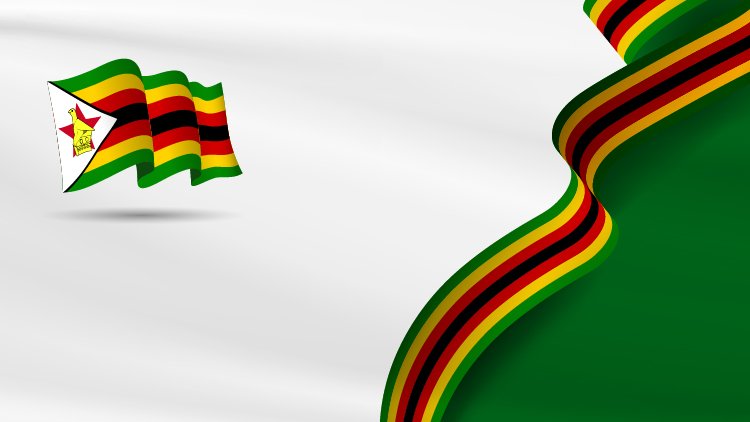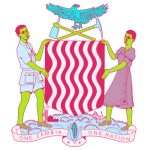
Facts about Zimbabwe, Culture and Language
Zimbabwe, a fascinating country located in Southern Africa, is a land of rich cultural heritage and language diversity within the context of African countries. This nation has a remarkable history that dates back to the 15th century, encompassing various influences and experiences, including the impact of the white population. From the official languages to native dialects, Zimbabwe’s linguistic tapestry reflects its multifaceted identity in the heart of South Africa. Let’s delve into some intriguing facts about Zimbabwe’s language and culture, influenced by American English and other linguistic traditions.
Official Languages and Native Tongues
English, a legacy of British colonial rule, is Zimbabwe’s official language. This linguistic connection with the British government stems from the era when the country was known as Southern Rhodesia. During this period, Zimbabwe was under the influence of white governments that introduced English as the primary language for administration, education, and commerce.
Besides English, Zimbabwe boasts a variety of indigenous languages. Among these, there are 16 officially recognized native languages, with a few notable ones being Chewa, Chibarwe, Sotho, and Tonga. The diversity of native languages in Zimbabwe reflects the cultural richness of the country, with each tongue representing unique ethnic groups and histories.

The Historical Roots
The history of Zimbabwe is a fascinating tapestry woven with a myriad of influences. The 19th century marked significant change as the British South African Company established control over the region that would become present-day Zimbabwe. The company, led by British settlers, sought to exploit the area’s resources, particularly in the agricultural sector. This period saw the emergence of Southern Rhodesia, and it played a pivotal role in shaping the country’s culture and language.
In the north of present-day Zimbabwe, Northern Rhodesia (now Zambia) was also under British influence. These two regions shared some common experiences during their colonial past, but they evolved differently, ultimately leading to distinct cultural and linguistic characteristics

Cultural Heritage and Diversity
Zimbabwe’s culture is a vibrant tapestry woven with the threads of tradition and modernity. The country’s rich cultural heritage is celebrated through various forms of art, music, and dance. The Zimbabwean people take immense pride in their traditional music, which often features instruments like the mbira (thumb piano), and vibrant dance performances that tell stories of their history and everyday life.
Zimbabwe is known for its iconic national parks and wildlife conservation efforts. Hwange National Park and Mana Pools National Park are just a couple of examples of the breathtaking natural beauty found in the country. These parks are home to a wide range of wildlife, including elephants, lions, and cheetahs, making Zimbabwe a popular destination for wildlife enthusiasts and tourists.
Language and Cultural Diversity Today
As Zimbabwe moves into the future, the relationship between language and culture continues to evolve. The indigenous languages remain integral to the identities of different ethnic groups, helping preserve their unique traditions and histories. English, on the other hand, is an essential foreign language, facilitating communication within the country and with other nations.
Zimbabwe’s population growth has contributed to a diverse society, with various ethnic groups coexisting harmoniously. While the country’s history has been marked by colonial influences, it has also witnessed a struggle for independence and self-determination. The country gained independence from British colonial rule in 1980 and became known as Zimbabwe African People’s Union.
Ethnic Diversity and Environmental Beauty
Zimbabwe’s cultural tapestry is further enriched by the Sotho and Tonga people residing in the southern regions. These communities speak Bantu languages within the Niger-Congo language family, distinct from the Shona majority. Their way of life is closely linked to the environment, with the iconic flame lily, Zimbabwe’s national flower, gracing their lands. The Sotho and Tonga communities have faced major concerns regarding access to healthcare and education, leading to variations in fertility and infant mortality rates. Initiatives promoting family planning, nutrition, and medical care are crucial for ensuring the well-being of these communities and fostering sustainable growth.
The miombo woodlands, characteristic of Zimbabwe’s Eastern Highlands, are another vital aspect of the country’s natural heritage. These woodlands provide habitat for diverse wildlife and contribute to the region’s ecological balance. However, land reform programs have impacted land management practices in these areas. Balancing economic development with environmental sustainability remains a key challenge. The largest city, Harare, plays a vital role in formulating policies that address these concerns. Ensuring responsible land use practices and protecting the delicate ecological balance of the Eastern Highlands will be crucial for Zimbabwe’s future.
Ethnic Diversity and Environmental Beauty
Zimbabwe’s cultural tapestry is further enriched by the Sotho and Tonga people residing in the southern regions. These communities speak Bantu languages within the Niger-Congo language family, distinct from the Shona majority. Their way of life is closely linked to the environment, with the iconic flame lily, Zimbabwe’s national flower, gracing their lands. The Sotho and Tonga communities have faced major concerns regarding access to healthcare and education, leading to variations in fertility and infant mortality rates. Initiatives promoting family planning, nutrition, and medical care are crucial for ensuring the well-being of these communities and fostering sustainable growth.
The miombo woodlands, characteristic of Zimbabwe’s Eastern Highlands, are another vital aspect of the country’s natural heritage. These woodlands provide habitat for diverse wildlife and contribute to the region’s ecological balance. However, land reform programs have impacted land management practices in these areas. Balancing economic development with environmental sustainability remains a key challenge. The largest city, Harare, plays a vital role in formulating policies that address these concerns. Ensuring responsible land use practices and protecting the delicate ecological balance of the Eastern Highlands will be crucial for Zimbabwe’s future.
The Power of Unity and Music
Zimbabwe’s national anthem, “Blessed be the Land of Zimbabwe,” reflects the aspirations of a united and prosperous nation. It symbolizes the country’s journey from colonial rule to an independent, sovereign state. Music and dance continue to play a pivotal role in Zimbabwean culture, promoting unity and celebrating the nation’s diversity.
Notable figures like Kirsty Coventry, a former Olympic swimmer and Zimbabwe’s Sports Minister, have brought international recognition to the country. Coventry’s achievements have served as a source of inspiration for Zimbabweans and have helped raise the nation’s profile on the global stage.

Inclusion and Sign Language
Zimbabwe is also making strides in promoting inclusivity and communication for all. Sign language is recognized as an essential means of communication for the deaf community. Initiatives have been taken to ensure that individuals with hearing impairments can participate fully in Zimbabwe’s cultural and social life.
Zimbabwe is a country that continues to grow and adapt to a rapidly changing world. As the nation works towards its vision for 2028, it is evident that its cultural diversity and linguistic tapestry will remain a source of strength and pride.
Zimbabwe has taken steps to promote inclusivity and communication for the deaf community. Sign language is recognized as an essential means of communication, ensuring that individuals with hearing impairments can fully participate in the country’s cultural and social life.
- Sign language is recognized as an official language.
- Efforts to ensure full participation in social and cultural life.
Victoria Falls, known as the largest waterfall in the world, cascades down the mighty Zambezi River, marking the border between Zimbabwe and Zambia, two landlocked countries with diverse cultural heritages, including the Sotho and Tonga peoples. Lake Kariba, also fed by the Zambezi, is one of the world’s largest man-made lakes, providing fertile soil and access to water for the surrounding regions.
Economic Challenges and Opportunities
Zimbabwe’s capital city, Harare, and other largest cities are hubs for the country’s Black majority, who have experienced the impacts of land reform programs in recent history. The nation’s economy has faced challenges, with fluctuating inflation rates and a reliance on the African rand, as well as domestic products like peanut butter. Yet, amidst these challenges, there has been a focus on addressing major issues such as access to land and improvements in life expectancy. Organizations like the Catholic Commission for Justice and Peace strive to promote equality and support for the majority rule. Despite a complex history dating back to ancient cities and the 9th century, Zimbabwe continues to push towards a brighter future, marked by a focus on human rights and economic growth.
The Sotho and Tonga communities in southern Africa inhabit regions with a rich natural environment, including the beautiful flame lily, the national flower of Zimbabwe. Fertility rates and growth rates can vary across these areas due to differences in access to healthcare and education. Addressing infant mortality rates remains a priority, as improving these rates is key to healthier future generations and sustained community growth. Initiatives that focus on healthcare, nutrition, and family planning are crucial for supporting the well-being of these communities in the 21st century.
The Parliament of Zimbabwe is actively involved in implementing policies to support these efforts, while British Airways contributes to connectivity and development by facilitating travel and trade in the region.
Challenges and Cultural Preservation
The land reform programme in Zimbabwe has aimed to address historical imbalances in land ownership. However, it has also presented challenges for the Sotho and Tonga communities. Traditionally reliant on specific land for their livelihoods and cultural practices, some members of these communities have faced displacement or uncertainty regarding access to their ancestral lands.
This situation highlights the importance of striking a balance between economic development and cultural preservation. Finding solutions that ensure the Sotho, Tonga communities can continue their traditions while contributing to a more equitable future for all Zimbabweans is crucial.

Excellence in Translation Services Across Languages
Translation companies providing excellent service cater to Spanish speakers and those needing translations for African languages. Official translators with extensive experience ensure quality translations of various documents, including medical documents, marketing materials, and official documents for the Colombian government. Certified translators proficient in multiple language combinations, including Colombian dialects and slang terms, maintain the integrity of the original document while delivering accurate translations. Spanish translators, known for their quick response times, handle foreign language documents with precision, ensuring effective communication and compliance with local nuances.
These experts are adept at managing a wide array of translation needs, from business contracts and technical manuals to personal documents like birth certificates and academic transcripts. They utilize advanced translation tools and methodologies to guarantee that every translation project meets the specific requirements of the target audience, preserving the original context and tone.
By understanding the cultural and linguistic intricacies of both the source and target languages, these professionals ensure that all translated materials meet the highest standards, facilitating seamless interactions across linguistic and cultural boundaries. Their commitment to excellence extends beyond simple translation; it includes localization services that adapt content to fit the cultural preferences and legal requirements of different regions. This dedication to quality and cultural sensitivity helps businesses and individuals navigate the complexities of global communication with confidence and ease.
Ecological and Societal Dynamics in Zimbabwe
Enormous specimens of strangler fig and tree wisteria thrive in Zimbabwe’s hardwood forests, particularly in low-lying parts and terrestrial ecoregions. These areas are rich in biodiversity, hosting numerous flowers and other native plant species. However, urban expansion and woodland degradation pose significant threats to these ecosystems, leading to the decline of unique habitats like the Zambezian halophytics.
The socio-economic landscape of Zimbabwe is intricately linked to its natural environment. According to the Zimbabwe National Statistics Agency, national employment figures in 2022 were influenced by various factors, including the health of natural resources and ecological stability. The population density and death rate provide insights into the challenges faced by the country, including the impact of environmental degradation on human well-being.
Judah Mazive and other experts highlight the ratio of government expenditure in current dollars, reflecting the government’s efforts to balance economic development with environmental conservation. Historical contexts, such as those documented by South African History Online, show how insurrectionist forces and other socio-political dynamics have shaped the nation’s trajectory.
As Zimbabwe navigates these complexities, the interplay between ecological preservation and socio-economic development remains crucial. Efforts to protect hardwood forests and manage urban expansion are vital for maintaining biodiversity and supporting national employment. By addressing woodland degradation and promoting sustainable practices, Zimbabwe can work towards a future where both its natural and human resources thrive.
Socio-Historical Complexities in Zimbabwe
The loss of life combined with socio-political upheavals in African countries throughout the 20th centuries has profoundly shaped regions like Zimbabwe. The country is home to ecological treasures such as the Mana Pools, a UNESCO World Heritage Site known for its fertile soil and diverse flora, including the spider lily, snake lily, and enormous specimens of chirinda stinkwood and other hardwood forests. The mopane woodlands and country fever trees further enhance Zimbabwe’s rich biodiversity, which is pivotal for the nation’s environmental heritage.
In Eastern Zimbabwe, the University of Zimbabwe stands as a beacon of education and research, contributing to the understanding and preservation of these natural wonders. However, the socio-political landscape has been equally complex. The era of white farmers and the subsequent transition to a white government, followed by efforts to redistribute land, have left indelible marks on the nation’s rich history. This period is intricately linked to South Africa’s own historical context and its impact on regional dynamics.
Air Zimbabwe, the nation’s flag carrier, connects the country with the broader Middle East and other regions, facilitating cultural and economic exchange. The Supreme Court of Zimbabwe plays a crucial role in adjudicating matters related to land, governance, and human rights, further shaping the nation’s trajectory.
UNESCO World Heritage status for sites like Mana Pools underscores the global recognition of Zimbabwe’s natural and cultural significance. The armed forces and local communities work towards protecting these areas from environmental threats and preserving them for future generations. The Population Division provides vital statistics that inform policies aimed at balancing development with conservation.
As Zimbabwe navigates its path forward, the interplay between its rich ecological heritage and complex socio-historical realities remains a focal point. Efforts to sustain the hardwood forests, manage fertile soil, and protect UNESCO sites are crucial for maintaining biodiversity and cultural legacy. Understanding and addressing the socio-political legacies of the past, including the role of native languages and education, will be key to fostering a resilient and inclusive future for Zimbabwe and its people.
Zimbabwe’s Diverse Landscape and Economic Challenges
The Zimbabwean dollar has faced numerous challenges over the years, reflecting the broader economic struggles of the nation. Amidst these difficulties, the protection of minority languages and cultural heritage remains a priority, especially in areas near the Limpopo rivers, where diverse communities reside. The legacy of white farmers and their historical influence on land ownership continues to shape the socio-economic landscape, influencing population growth and agricultural practices.
The Supreme Court of Zimbabwe plays a key role in addressing land disputes and ensuring justice in matters related to economic development and social equity. The country’s rainy season significantly impacts agricultural productivity, influencing the livelihoods of many Zimbabweans. Academic institutions like the University of Zimbabwe are pivotal in advancing knowledge and supporting sustainable development through research and education.
Ecologically, Zimbabwe is home to unique flora such as country fever trees and Zambezian halophytics, which contribute to its rich biodiversity. The Population Division, along with the United Nations Department of Economic and Social Affairs, provides critical data on population dynamics, helping to inform policies that balance growth with environmental conservation.
Internationally, Zimbabwe maintains connections through commercial airlines, with Air Zimbabwe playing a significant role in facilitating travel and trade. The Air Force of Zimbabwe also contributes to national security and disaster response, particularly during challenging weather conditions.
As Zimbabwe navigates its economic and social challenges, the interplay between natural resources, population dynamics, and institutional roles will be crucial. Efforts to stabilize the Zimbabwean dollar, protect minority languages, and support sustainable growth will determine the nation’s path forward, ensuring a balanced and inclusive development trajectory.
Zimbabwe, characterized by its diverse terrestrial ecoregions, hosts a plethora of unique flora including tree wisteria, spider lilies, and snake lilies. These plants thrive in low-lying areas and the expansive Zambezian Baikiaea woodlands, contributing to the country’s rich biodiversity. Population growth, closely monitored by the United Nations Department of Economic and Social Affairs, influences urban planning and resource allocation. Commercial airlines facilitate domestic and international travel, enhancing economic connectivity. The armed forces play a crucial role in disaster response and safeguarding Zimbabwe’s natural heritage, including UNESCO World Heritage sites.
Frequently Asked Questions
What are the official languages of Zimbabwe?
The official language of Zimbabwe is English, which has historical ties to British colonial rule. In addition to English, Zimbabwe boasts 16 officially recognized native languages, including Chewa, Chibarwe, Sotho, and Tonga, reflecting the country’s linguistic diversity.
How did colonial history shape Zimbabwe's culture and language?
Zimbabwe’s colonial history, particularly under British influence, played a significant role in shaping its culture and language. English was introduced as the primary language for administration, education, and commerce during this period.
What is the significance of music and dance in Zimbabwe's culture?
Music and dance are integral to Zimbabwean culture. Traditional music often features instruments like the mbira (thumb piano), and vibrant dance performances that convey stories of the country’s history and everyday life, celebrating its rich cultural heritage.
What wildlife and natural attractions can be found in Zimbabwe?
Zimbabwe is known for its iconic national parks, such as Hwange National Park and Mana Pools National Park, which are home to a wide range of wildlife, including elephants, lions, and cheetahs. These natural attractions make Zimbabwe a popular destination for wildlife enthusiasts and tourists.
How has Zimbabwe embraced inclusivity and sign language?
Zimbabwe has taken steps to promote inclusivity and communication for the deaf community. Sign language is recognized as an essential means of communication, ensuring that individuals with hearing impairments can fully participate in the country’s cultural and social life.
